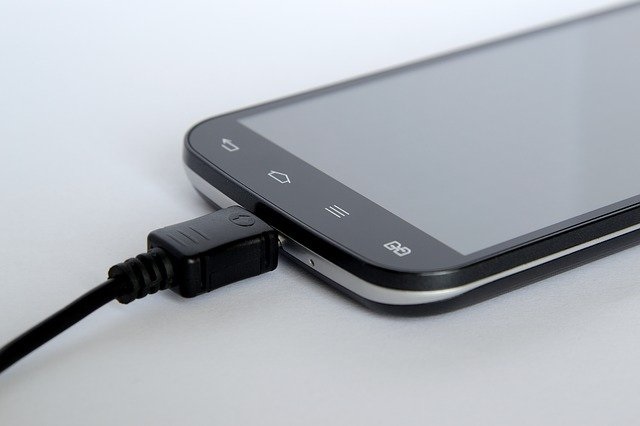It is very dreadful when you have a broken charger port. This error is something you are unable to fix quickly unless you service it. Fortunately, it is possible to replace charger ports easily. Besides, you are not required to invest a lot of money compared to a broken LCD. Here are some quick and easy fixes in this blog post- How to Charge Your Phone with a Broken Charger Port?
Sometimes, we don’t have the essential utilities in our hands. But at that moment, we have to open the mobile. It is when you must want to know the solution. Using Double-A batteries can be helpful here. Whether you have any broken charging port, you can charge it by connecting the batteries in series.
However, it is essential to determine whether the issue is the charging port or not. A lot of reasons are there due to which your device is not charging. You can find these tricks handy during an emergency. However, it is recommended to get your phone serviced. At an emergency timing, you can take the help of these methods to charge the mobile battery.
How to Charge Your Phone with a Broken Charger Port?- Some Emergency fixes:
-
DIY USB Port Fixing:
It is the quickest, simplest method that you can try. This one is the most common solution hence. Sometimes, the connection between the metallic surface of the charging port and the USB charger is not good. In most cases, the error is seen due to a manufacturer defect or repeatedly plugging and unplugging the charger cable.
It is better to clean the charging port always. In this case, you should take the help of a flashlight and toothpick/pin. It will help you to eliminate any dirt stuck on the charging pin.
- First, your job is to switch off the device.n
- Then, if there is any battery, remove it.
- Use a small stick for arranging any misplaced tabs again inside your mobile’s USB port.
- Whether you misalign the charging pin, You should lever up this gradually.
- After that, you should insert the battery again.
- Finally, you should plug the charger in.
-
Use Another Battery to Charge Your Battery:
You are capable of using the trick for mobiles having a removable battery. People who don’t have removable batteries don’t have to use the trick.
- You should first eliminate the battery of your device. Hence, you are required to have access to the connection points of the battery.
- Use a 9-volt or a AAA/AA battery if required.
- Then, you need to find the +Ve and -Ve connectors of the batteries. You can identify the positive side and negative side by their location. The positive one is available in the red rectangle, whereas the negative one is at the other battery’s end.
- Ensure that both the batteries and the battery of your device have the same voltage. Generally, 3.7V DC is the voltage of a standard mobile. On the flip side, 1.5V is the battery power of a single AA or AAA battery. Therefore, it is essential to have 3 AA batteries.
- You should have two metal wires covered with plastic insulation.
- Then, your task is to tape these batteries together.
- After that, your job is to clamp the insulated cables to the batteries and the battery.
- Finally, you have to wait for some moments until the battery has some charge. You should know that you are unable to charge your mobile battery that much. However, for emergency use, it is sufficient.
-
Rub the Battery:
- First, your job is to remove the battery of your mobile.
- After that, your job is to hold these between the palms. You need to create sufficient heat and friction. To do this, you have to rub the battery in between the palms.
- Then, you should keep your battery on your mobile. Finally, you should try to charge again.
-
Check the Charging Cable:
Most users are facing troubles due to Charging cables. It is the most common cause of mobile. While using the wires, these require a lot of wrapping and unwrapping, twisting and untwisting. It becomes vital while you transport these regularly. It is because a few people are there who are unable to take the chargers everywhere. As a result, the charging wire may be damaged. If necessary, you can change the wire to another. Then, check whether your mobile is charging or not. If it is charging, then ensure that the charging cable is faulty.
-
Check the Charger Adapter:
If you prefer, you are capable of changing the charging cable. If your mobile is not charging still, and your charging cable is not faulty, then look at the charger adapter. You should now keep the wire aside and then see the connecting port between them. Check if there is any burning smell and the connecting port seems rusty.
If there exists any issue, then you must replace the charger adapter. Besides, it is better to avoid any charger adapter or charging wire for charging the mobile. Every mobile should have a specific voltage requirement for charging the mobile effectively. In addition, the charger you use must meet the requirements. Make sure that to exchange the charging wire, you are purchasing it from credible shops.
Conclusion:
Whether you have a broken charging port and don’t have essential gadgets or tools, these are a few methods you should try in your home as an emergency fix. Ensure that you are not incurring damage on the mobile. If you can, it is better to service your mobile rather than damage it potentially. It is also one of the reasons why manufacturers began to create single-unit mobiles. Hope this blog post “How to Charge Your Phone with a Broken Charger Port? can help you to resolve your issue.
Frequently Asked Questions on How to Charge Your Phone with a Broken Charger Port?:
- How can you check the amperage and voltage of the phone’s battery?
Ampere is a type of application that you are capable of downloading on an Android smartphone. Using this, you can detect the charging statistics of the charger as well as the device.
- At what battery percentage should you charge mobile?
You should keep your mobile charged between 60 to 80 percent. As soon as the battery charge is below 15%, it will disrupt the battery’s life.
- Why is your mobile not charging while it is plugged in already?
The reasons may be an outdated operating system, faulty battery, damaged USB socket or wall socket, or defective charging cable. However, in most cases, a defective charger causes the problem.







